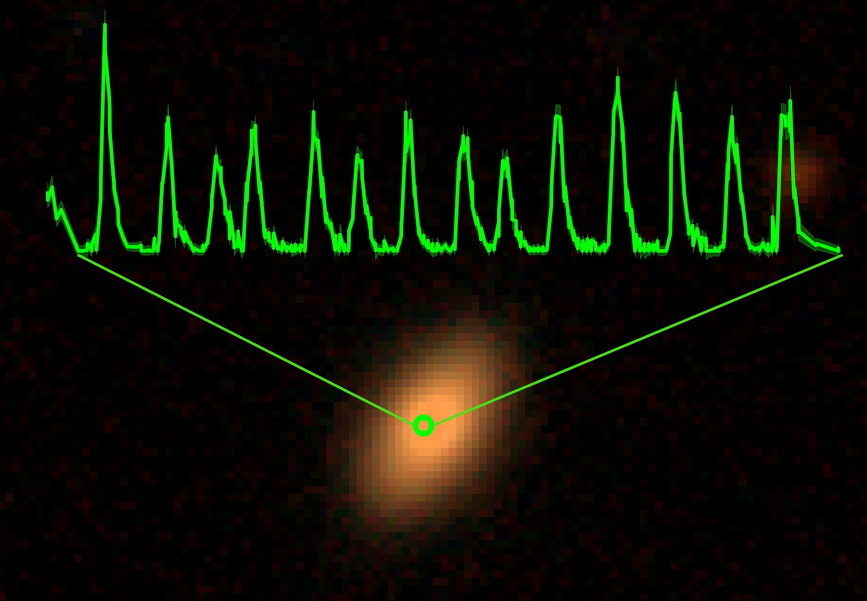
 Credit: MPE; optical image: DESI Legacy Imaging Surveys/D. Lang (Perimeter Institute); NASA
Credit: MPE; optical image: DESI Legacy Imaging Surveys/D. Lang (Perimeter Institute); NASA
Round and Round and Down?
If you keep an eye on the entire sky, you're bound to find some interesting, strange things going on. The more intently you look, the larger number of peculiar sources you find, and the longer you look, the more variable sources you see. The X-ray sky is particularly chock full of interesting sources that vary on a large range of timescales, from decades to milli-seconds. Even seemingly innocuous sources can behave badly if you watch them long enough. The eROSITA telescope on the Spektr-RG spacecraft is an excellent facility for probing the weird things that go bump in the X-ray night, since every six months it takes a complete picture of the X-ray sky (which it's been doing since its launch in July, 2019). The image above is an excellent example of the sort of breakthrough science that eROSITA does. The image shows a false-color optical picture of a rather non-descript galaxy which goes by the mundane name of 2MASS 02314715-1020112. However, during scanning observations, eROSITA found something very strange: unusually strong X-ray variations from this galaxy occuring every few hours. Followup observations by the Neutron Star Interior Composition Explorer (NICER for short) were able to trace out these variations in detail, as shown by the green graph at the top of the image. The detailed monitoring of this galaxy by NICER nicely showed that the X-ray variations seen by eROSITA were part of a nearly-periodic signal coming from the galaxy itself, with nearly regular peaks occurring roughly every 18.5 hours. The nature of these variations, dubbed "quasi-periodic eruptions" by scientists, is not well determined. Researchers think that these strange pulses may in fact be the signal of an unfortunate star circling the supermassive black hole at the galaxy's center, about to be torn apart and swallowed.
Published: October 11, 2021
<
HEA Dictionary ● Archive
● Search HEAPOW
● Other Languages
● HEAPOW on Facebook
● Download all Images
● Education ● HEAD
>

Each week the HEASARC
brings you new, exciting and beautiful images from X-ray and Gamma ray
astronomy. Check back each week and be sure to check out the HEAPOW archive!
Page Author: Dr. Michael F. Corcoran
Last modified Tuesday, 27-Feb-2024 10:15:20 EST


